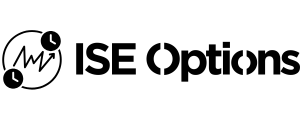Choosing the right cryptocurrency exchange can make a huge difference in your trading experience. Uphold and Binance are two popular platforms that offer different features for crypto investors. Uphold stands out for its unique ability to let you trade directly across many types of assets, while Binance is known for its wider selection of cryptocurrencies and often lower fees.
Both exchanges have their strengths and weaknesses. Uphold has a higher ease of use rating (9.0) compared to Binance (8.0), making it potentially better for beginners. However, users report that both platforms struggle with customer service response times, which is something to consider before creating an account.
Your decision between these exchanges should depend on your specific needs. If you’re looking primarily to purchase XRP, Uphold might be your best choice. For a broader range of cryptocurrencies, Binance could be the better option. By understanding the differences in features, fees, and user experience, you can make an informed choice for your crypto journey.
Uphold vs Binance: At A Glance Comparison
When choosing between Uphold and Binance, it helps to see their key differences side by side. Here’s a quick comparison of these popular cryptocurrency exchanges.
User Experience
- Uphold: Rated 9.0 for ease of use, more beginner-friendly
- Binance: Rated 8.0 for ease of use, slightly steeper learning curve
Market Position
- Binance: Holds 3.30% market share in investment and finance services
- Uphold: Holds 0.63% market share in the same category
Overall Rating
- Uphold: 9.4 overall score
- Binance: Lower overall score than Uphold
Platform Features
| Feature | Uphold | Binance |
|---|---|---|
| Cryptocurrency options | Wide range | Extensive selection |
| Trading tools | Basic to intermediate | Advanced |
| Mobile app availability | Yes | Yes |
| Fiat currency support | Multiple options | Limited options |
Binance offers more advanced trading features and typically appeals to experienced traders. You’ll find more trading pairs and analytical tools at your disposal.
Uphold focuses on simplicity and accessibility. You can easily convert between different assets, including cryptocurrencies, fiat currencies, and even precious metals.
Both platforms provide mobile apps, allowing you to trade on the go. Your choice ultimately depends on your trading experience and specific needs.
Uphold vs Binance: Trading Markets, Products & Leverage Offered
Binance and Uphold offer different trading options for crypto investors. Your choice between them may depend on what you want to trade and how.
Available Assets
| Platform | Cryptocurrencies | Other Assets |
|---|---|---|
| Uphold | 130+ cryptocurrencies | Precious metals, U.S. stocks, environmental assets |
| Binance US | 150+ cryptocurrencies | Limited to crypto only |
Uphold stands out with its “anything-to-anything” trading system. You can directly convert between different asset classes without needing intermediate steps. This makes trading between crypto and traditional assets much simpler.
Binance focuses primarily on cryptocurrency trading. It offers a wider selection of cryptocurrencies and more advanced trading pairs. For pure crypto traders, this depth of market options is beneficial.
Trading Products
Binance provides more advanced trading features including futures trading and high leverage options. You can access up to 20x leverage on certain trading pairs, making it attractive for experienced traders.
Uphold offers a more straightforward trading experience with limited leverage options. The platform focuses on accessibility rather than advanced trading tools.
Market Access
Both platforms provide market access through mobile apps and web interfaces. Binance offers more advanced charting tools and technical analysis features that appeal to active traders.
For beginners, Uphold’s simpler interface and diverse asset offerings provide an easier entry point. For advanced crypto traders seeking leverage and specialized trading options, Binance typically offers more comprehensive tools.
Uphold vs Binance: Supported Cryptocurrencies
When choosing between Uphold and Binance US, the range of available cryptocurrencies can be a deciding factor for your trading needs.
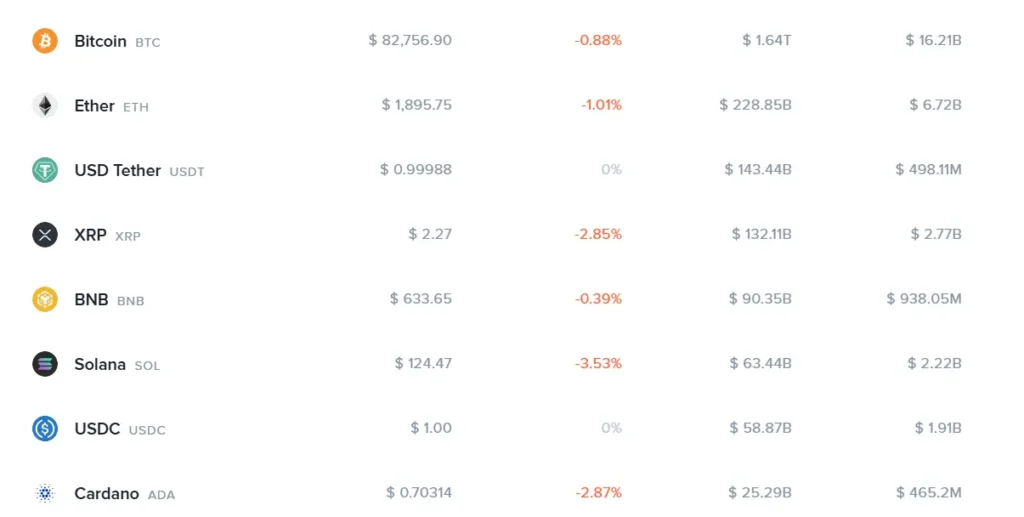
Uphold offers a wider selection of cryptocurrencies compared to Binance US. Based on recent data, Uphold supports more digital assets, allowing you to diversify your portfolio across more options.
Notable difference: Uphold supports XRP (Ripple), which is difficult to access on many US exchanges. This makes Uphold a preferred choice if you’re specifically interested in trading XRP.
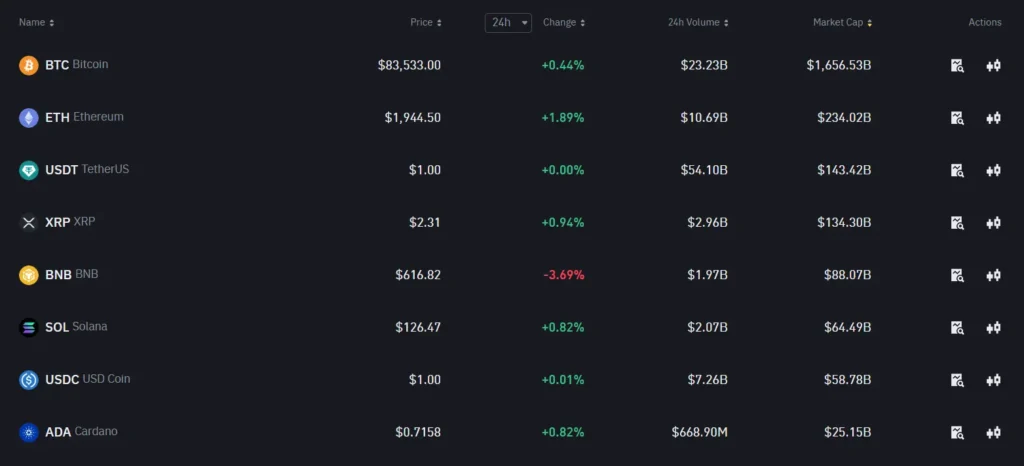
Binance US, while offering fewer total cryptocurrencies than Uphold, still provides access to most major coins and tokens. You’ll find all the standard options like Bitcoin, Ethereum, and many popular altcoins.
Trading pairs are another consideration. Binance US generally offers more trading pair combinations, giving you more flexibility in how you exchange between different cryptocurrencies.
Both platforms allow you to purchase crypto with US dollars, but Uphold’s unique feature lets you trade directly between different asset classes (cryptocurrencies, precious metals, and national currencies) without converting to USD first.
Your choice should depend on which specific cryptocurrencies you want to trade. Check each platform’s current listings before deciding, as supported assets can change based on regulatory requirements.
Uphold vs Binance: Trading Fee & Deposit/Withdrawal Fee Compared
When choosing between Uphold and Binance, fees play a crucial role in your decision. Both platforms have different fee structures that affect your trading costs.
Uphold charges up to 2.95% for trading, with no commissions. This means you’ll pay a spread on every trade, but won’t face additional transaction fees.
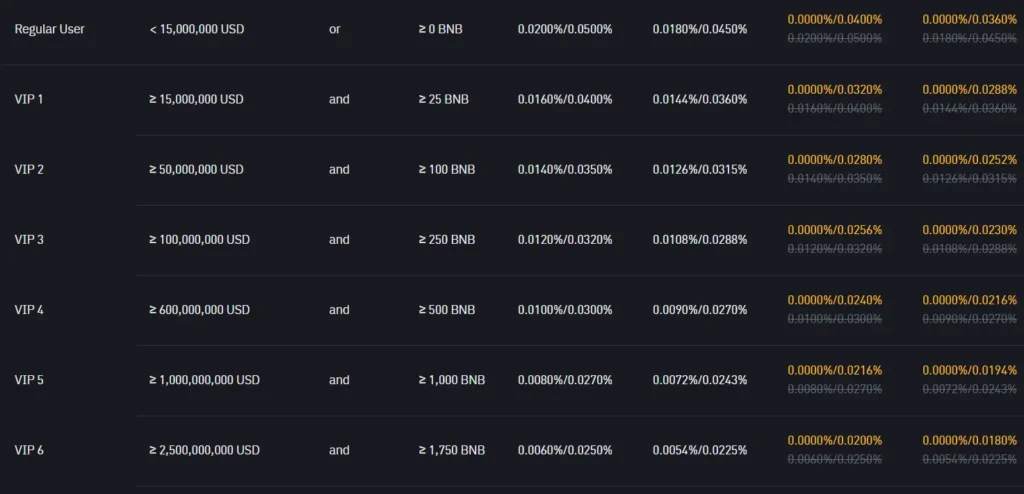
Binance generally offers lower trading fees, making it more attractive for active traders. The exact rates depend on your trading volume and whether you use their native token (BNB) for fee payments.
Basic Fee Comparison:
| Platform | Trading Fees | Deposit Fees | Withdrawal Fees |
|---|---|---|---|
| Uphold | Up to 2.95% (spread) | No bank deposit fees | No withdrawal fees |
| Binance | Lower percentage (varies) | Varies by method | Varies by cryptocurrency |
For deposits, Uphold doesn’t charge fees for bank transfers. Binance’s deposit fees vary depending on your payment method.
When withdrawing funds, Uphold maintains its no-fee policy. Binance charges different withdrawal fees based on the cryptocurrency you’re moving.
If you’re an active trader making frequent transactions, Binance’s lower trading fees could save you money in the long run.
For occasional traders who value simplicity, Uphold’s straightforward fee structure might be more appealing despite the higher percentage.
Always check the platforms’ current fee schedules before making your decision, as rates may change over time.
Uphold vs Binance: Order Types
When trading on cryptocurrency exchanges, the available order types can significantly impact your trading strategy. Both Uphold and Binance offer different options for executing trades.
Uphold Order Types:
- Market orders (buy/sell at current market price)
- Limit orders (set your desired price)
Uphold keeps things simple with these basic order types. This makes the platform more accessible for beginners who don’t need complex trading options.
Binance Order Types:
- Market orders
- Limit orders
- Stop-limit orders
- OCO (One-Cancels-the-Other)
- Post-only orders
- Trailing stop orders
Binance clearly offers more advanced trading options. These additional order types give you better control over your trading strategy and risk management.
If you’re new to crypto trading, Uphold’s straightforward approach might be appealing. You can quickly buy or sell without navigating complex order forms.
For experienced traders, Binance provides the tools needed for more sophisticated strategies. The stop-limit and OCO orders help you manage risk in volatile markets.
The difference in order types reflects each platform’s target audience. Uphold focuses on simplicity for casual investors, while Binance caters to more active traders who need advanced tools.
When choosing between these exchanges, consider your trading style and experience level. More order types aren’t always better if you don’t need the extra complexity.
Uphold vs Binance: KYC Requirements & KYC Limits
Both Uphold and Binance require users to complete Know Your Customer (KYC) verification, but their processes differ slightly.
Uphold KYC Process:
- Requires KYC verification during the initial registration
- Users must provide personal information and ID documents before trading
- Once verified, you can access all platform features
Binance KYC Process:
- Known for having one of the industry’s most rigorous KYC processes
- Takes firm measures against account misuse to maintain compliance
- Treats unauthorized account access as a severe breach of their Terms of Use
KYC Levels and Limits:
| Exchange | Basic Verification | Full Verification | Account Limits |
|---|---|---|---|
| Uphold | Personal info | ID + proof of address | Higher withdrawal limits after full verification |
| Binance | Email + phone | ID + facial recognition | Withdrawal limits increase with verification level |
Binance’s strict compliance approach helps protect users but may require more steps to complete verification fully.
Uphold’s upfront KYC requirement means you’ll need to verify your identity before you can start using the platform at all.
Both exchanges use KYC to comply with regulations and protect users, but the timing and specific requirements may influence which platform you find more convenient.
Uphold vs Binance: Deposits & Withdrawal Options
When comparing Uphold and Binance, deposit and withdrawal options are key factors to consider for your trading experience.
Uphold offers several ways to fund your account. You can use bank transfers, credit/debit cards, and even deposit cryptocurrency directly. One standout feature is that Uphold charges no withdrawal fees, making it cost-effective when moving your funds.
Binance provides more deposit options overall, including bank transfers, credit/debit cards, P2P trading, and multiple cryptocurrency options. However, Binance does charge withdrawal fees that vary depending on the currency and network used.
Both platforms support fiat currencies, but there are differences in availability. Uphold tends to be more user-friendly for beginners making their first deposits.
Regarding withdrawal limitations, Binance allows you to withdraw more cryptocurrencies to external wallets than Uphold. Some users report that Uphold restricts which currencies can be moved to external wallets.
Processing times also differ between platforms. Uphold typically processes withdrawals quickly, while Binance might take longer depending on the verification level of your account and the currency being withdrawn.
For those new to crypto trading, Uphold’s simpler approach to deposits and withdrawals might be preferable. Experienced traders might appreciate Binance’s wider range of options despite the fees.
Uphold vs Binance: Trading & Platform Experience Comparison
Uphold offers a more straightforward trading experience with a user-friendly interface. You can easily trade directly between different assets, including cryptocurrencies, stocks, and precious metals on one platform.
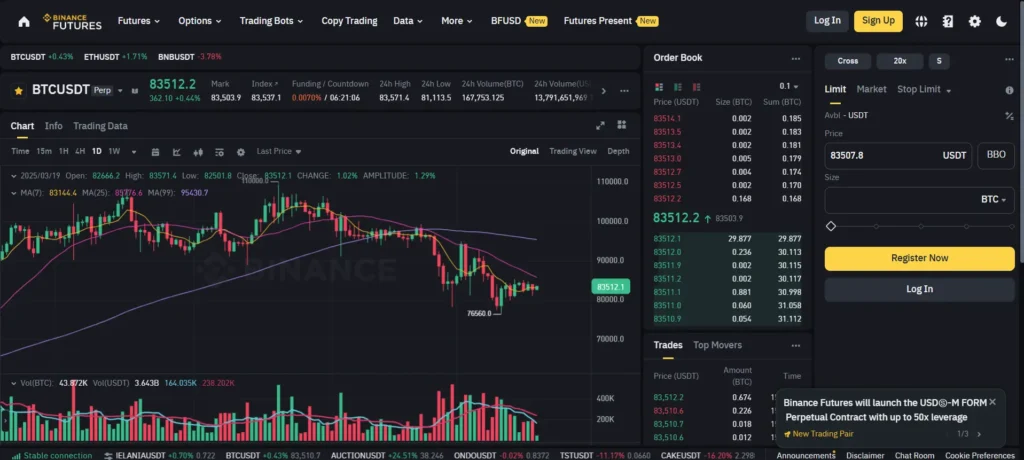
Binance provides a more comprehensive trading experience with advanced charting tools and order types. However, this comes with a steeper learning curve for new users.
Ease of Use Ratings:
- Uphold: 9.0/10
- Binance: 8.0/10
Uphold’s platform is designed for simplicity, making it ideal if you’re new to crypto trading. The interface allows for quick conversions between assets without navigating through multiple screens.
Binance excels in offering depth of features for experienced traders. You’ll find more trading pairs, analytical tools, and advanced order options than on Uphold.
Mobile Experience:
Both platforms offer mobile apps, but users generally find Uphold’s app more intuitive. Binance’s app packs more features but can feel overwhelming at first.
Trading Options:
- Uphold: Direct trading across asset classes, simpler order types
- Binance: Spot, futures, options, margin trading, staking, and more
When choosing between these platforms, consider your trading needs. If you value simplicity and direct conversions between different asset types, Uphold might be your better choice. If you need advanced trading features and don’t mind a learning curve, Binance offers more trading capabilities.
Uphold vs Binance: Liquidation Mechanism
When trading on margin or using leverage, understanding the liquidation mechanism is crucial. This process helps platforms manage risk when your position’s value falls below certain thresholds.
Binance Liquidation System
Binance uses a tiered liquidation process that begins with warnings as your margin ratio approaches critical levels. The platform first attempts partial liquidations to give you a chance to add funds.
If your margin ratio falls below maintenance requirements (typically 1.1x), Binance’s automatic system begins liquidating positions. Your assets are sold at market price until your account reaches a safe level.
Uphold Liquidation Approach
Uphold has a more straightforward liquidation system. They generally use a single-stage liquidation process with less granular warnings compared to Binance.
When your position reaches the liquidation threshold, Uphold will close the position completely rather than using Binance’s progressive approach.
Key Differences
| Feature | Binance | Uphold |
|---|---|---|
| Warning System | Multiple tiers | Basic alerts |
| Liquidation Process | Progressive/partial | Complete position closure |
| Liquidation Fee | 0.5-2% depending on asset | Up to 2.95% |
| User Control | More options to add funds mid-process | Limited intervention options |
You should consider these liquidation mechanisms when choosing between platforms. Binance offers more flexibility during liquidation events, which can be valuable during volatile market conditions.
Proper risk management and position sizing help you avoid liquidation on either platform.
Uphold vs Binance: Insurance
When choosing between Uphold and Binance, understanding their insurance policies is crucial for protecting your investments. Both platforms have different approaches to securing user funds.
Binance Insurance Policy:
- SAFU (Secure Asset Fund for Users) – A dedicated emergency insurance fund
- Created in 2018 to protect user assets
- Holds approximately $1 billion in reserves
Binance allocates a portion of trading fees to SAFU to cover potential losses from security breaches. This provides a safety net for users if something goes wrong.
Uphold Insurance Policy:
- Partners with insurance providers for digital asset coverage
- Offers protection against theft and cybersecurity incidents
- Covers approximately $150 million in assets
You should note that neither platform guarantees complete coverage of all assets. Insurance typically applies to hot wallet funds (those connected to the internet), while cold storage may have different protections.
Both exchanges use a mix of hot and cold storage systems. Binance keeps about 10% of funds in hot wallets, while Uphold maintains a similar ratio to balance security and liquidity.
Standard account protection differs between platforms. Binance offers two-factor authentication and advanced account controls. Uphold provides similar security features but with a more user-friendly interface.
Remember that insurance policies can change, so you should verify current coverage before making significant deposits on either platform.
Uphold vs Binance: Customer Support
Customer support is a crucial factor when choosing a cryptocurrency exchange. Both Uphold and Binance offer support options, but their quality and responsiveness differ.
According to user reviews, Uphold’s customer support receives a rating of 8.2, which is higher than Binance’s 7.1 rating. This suggests that Uphold users generally find their support team more responsive and helpful.
Despite having a smaller user base of around 10 million compared to Binance’s massive 224 million users, Uphold seems to manage their support requests more efficiently.
Both platforms have faced criticism for slow response times. Users report that during busy periods, you might wait longer than expected for assistance on either platform.
Binance offers support through:
- Live chat
- Ticket system
- FAQ section
- Community forums
Uphold provides support via:
- Email tickets
- Knowledge base
- Community support
- Social media channels
When you need help with account issues or transactions, Uphold might resolve your concerns faster. However, Binance offers more comprehensive self-help resources due to its larger ecosystem.
Remember that support quality can vary based on your region and the complexity of your issue. During market volatility or platform updates, response times typically increase for both exchanges.
Uphold vs Binance: Security Features
When choosing a cryptocurrency exchange, security should be your top priority. Both Uphold and Binance offer strong security features, but they differ in several ways.
Uphold prioritizes user security with two-factor authentication (2FA), which adds an extra layer of protection beyond your password. They also store a portion of user funds in cold storage, keeping them offline and safe from online attacks.
Binance also implements 2FA and uses cold storage solutions. However, they’ve faced more security challenges in the past, including a major hack in 2019 that resulted in losses of about 7,000 Bitcoin.
Key Security Features Comparison:
| Feature | Uphold | Binance |
|---|---|---|
| Two-Factor Authentication | ✓ | ✓ |
| Cold Storage | ✓ | ✓ |
| Insurance Coverage | Limited | SAFU Fund |
| Security History | Better track record | Some past breaches |
Binance created their Secure Asset Fund for Users (SAFU) after their breach. This emergency insurance fund helps protect user assets in case of security incidents.
Uphold has maintained a relatively clean security history, which might give you more peace of mind. Their platform emphasizes regulatory compliance across multiple jurisdictions.
Both platforms offer account-level security controls. You can set up withdrawal whitelist addresses and email confirmations for transactions to prevent unauthorized account access.
Remember to enable all available security features regardless of which platform you choose.
Is Uphold A Safe & Legal To Use?
Uphold is considered a safe platform for cryptocurrency trading. It has a strong security track record and has never experienced a major security breach.
The exchange is registered with the Financial Conduct Authority (FCA) in the UK, which adds to its legitimacy. This registration helps ensure that the platform follows proper financial regulations.
Uphold uses industry-standard security protocols to protect user funds and data. These include encryption technology to safeguard your personal information.
One standout feature is Uphold’s real-time proof of reserves. This transparency allows you to verify that the platform actually holds the assets it claims to have.
For user account protection, Uphold implements:
- Two-factor authentication (2FA)
- Biometric login options
- IP address monitoring
Regarding legality, Uphold operates in compliance with regulations in the countries where it’s available. You should still check your local laws about cryptocurrency trading, as these vary by location.
When comparing security with Binance, both platforms prioritize user protection. However, Uphold’s smaller size means it might be less targeted by hackers than larger exchanges like Binance.
Remember that no exchange is 100% risk-free. Always use strong passwords, enable all security features, and consider moving large amounts to a personal wallet for maximum safety.
Is Binance A Safe & Legal To Use?
Binance operates two separate platforms: Binance.com (global) and Binance.US (for American users). Both platforms are generally considered safe with strong security measures to protect user funds.
Binance.US was specifically created to comply with U.S. regulations. It offers fewer cryptocurrencies than the global version but follows strict U.S. financial rules.
Safety Features:
- Two-factor authentication (2FA)
- Advanced encryption
- Cold storage for most funds
- Regular security audits
Despite these safety measures, Binance has faced some regulatory challenges. The global platform has been involved in money laundering controversies in the past.
Legality by Region:
| Region | Status |
|---|---|
| United States | Legal through Binance.US (restricted in some states) |
| Europe | Legal with varying regulations |
| Asia | Mixed (banned in some countries) |
Your funds are generally secure on Binance platforms. However, customer service response times can be slow according to user reports.
Always use strong passwords and enable all security features when using any crypto exchange. Never share your private keys or authentication codes with anyone.
When choosing between Binance and other platforms like Uphold, consider your specific needs around cryptocurrency selection, fees, and available features.
Frequently Asked Questions
Investors considering Uphold and Binance often have specific concerns about fees, cryptocurrency selection, security, and customer service. These platforms differ significantly in several key areas that may influence your choice.
What are the differences in fees between Uphold and Binance?
Binance typically offers lower trading fees than Uphold, with standard fees starting at 0.1% per trade. These fees can decrease further if you hold BNB tokens or have higher trading volumes.
Uphold’s fee structure is less transparent, with spreads built into transactions rather than clear percentage-based fees. These spreads can range from 0.8% to 1.2% on many transactions.
Withdrawal fees also differ between platforms. Binance charges specific fees based on the cryptocurrency network, while Uphold offers some free withdrawals to bank accounts but may charge higher crypto network fees.
Which offers a wider range of cryptocurrencies, Uphold or Binance?
Binance offers a significantly larger selection with over 350 cryptocurrencies available for trading. This makes it the clear choice for traders seeking access to newer or less common tokens.
Uphold supports approximately 130+ cryptocurrencies, which is still substantial but more limited than Binance. However, Uphold does include XRP, which has historically been unavailable on Binance US.
Both platforms regularly add new tokens, but Binance consistently maintains a larger and more diverse selection of trading pairs.
How secure are funds stored on Uphold compared to Binance?
Both exchanges implement strong security measures including two-factor authentication and cold storage for most user funds. Binance maintains a Secure Asset Fund for Users (SAFU) that acts as insurance against potential hacks.
Uphold emphasizes its record of never having lost customer funds to hackers. The platform maintains full reserves and undergoes regular audits to verify this claim.
Binance has experienced security breaches in the past but has compensated affected users. Its larger size means it faces more hacking attempts but also has more resources for security infrastructure.
Can you purchase XRP on Binance, and if so, how does the process compare to Uphold’s?
Uphold has been a popular platform for purchasing XRP, especially during periods when many exchanges delisted it due to SEC concerns. The purchase process is straightforward, with direct fiat-to-XRP options.
Binance’s availability of XRP varies by region. Binance US temporarily suspended XRP trading during regulatory uncertainty, while the international version continued offering it.
For US customers specifically looking to buy XRP, Uphold has provided more consistent access. The purchase process on Uphold is often simpler, with fewer steps compared to Binance.
What are the unique features of Uphold or Binance that set them apart from each other?
Binance offers advanced trading features including futures, options, staking, and a launchpad for new token offerings. Its trading interface provides comprehensive tools for technical analysis and advanced order types.
Uphold distinguishes itself with its “Anything to Anything” trading model that allows direct conversions between different asset classes. You can trade directly from USD to XRP, or even from silver to Bitcoin in one transaction.
Binance excels in trading volume and liquidity, while Uphold focuses on user-friendly interfaces and simplified trading between diverse assets including precious metals and select stocks.
Which platform provides better customer service, Uphold or Binance?
Customer service is a pain point for both platforms according to user reviews. Binance has faced criticism for slow response times, particularly during periods of high demand.
Uphold’s customer service also receives mixed reviews, though some users report faster response times compared to Binance. Both platforms primarily offer support through ticket systems rather than live chat or phone support.
Neither platform stands out for exceptional customer service, with response times potentially taking days during busy periods. This is a common issue across many cryptocurrency exchanges.
Binance vs Uphold Conclusion: Why Not Use Both?
When comparing Binance and Uphold, each platform offers unique advantages that might benefit your crypto journey. Binance generally provides lower trading fees and a wider selection of cryptocurrencies for experienced traders.
Uphold, on the other hand, stands out with its user-friendly interface. According to search results, Uphold scores higher in ease of use (9.0) compared to Binance (8.0), making it more accessible for beginners.
Key differences at a glance:
| Feature | Binance | Uphold |
|---|---|---|
| Trading Fees | Generally lower | Competitive but variable |
| User Experience | More complex | Smoother, more intuitive |
| Cryptocurrency Selection | Extensive | More limited |
| Learning Curve | Steeper | Gentler for beginners |
You don’t necessarily need to choose between these platforms. Many crypto investors use multiple exchanges to leverage different strengths. You might use Uphold for its simpler interface when getting started, then add Binance for its lower fees when trading larger volumes.
Both platforms have been noted to have customer service challenges during busy periods. This is something to keep in mind regardless of which platform you choose.
Consider your specific needs when deciding. Are you prioritizing ease of use or lower fees? Do you need access to specific cryptocurrencies? Your answers to these questions will guide your decision on whether to use one platform exclusively or both together.
